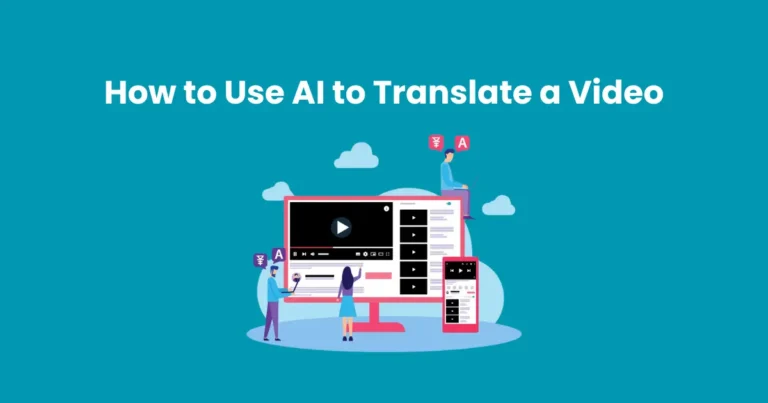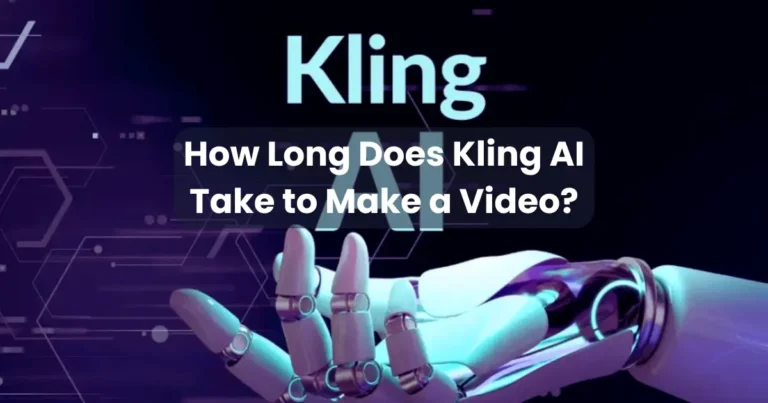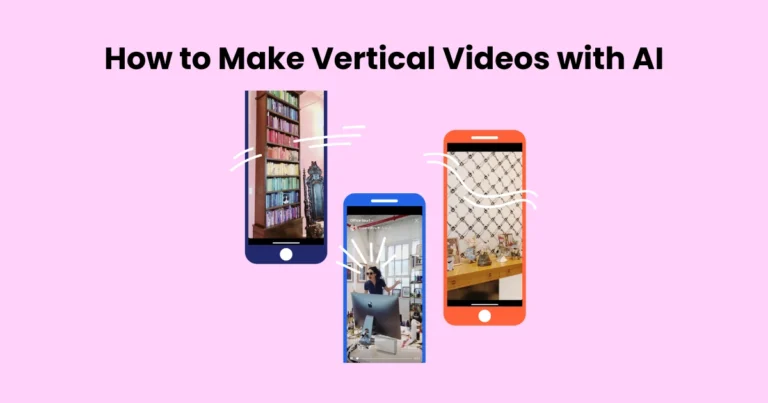AI Video in Education and Training Examples

Contents
- 1 What Is AI Video in Education and Training?
- 2 Benefits of Using AI Video in Learning Environments
- 3 Real-Life AI Video in Education Examples
- 4 Real-Life AI Video in Training Examples
- 5 Tools and Platforms That Use AI Video
- 6 Challenges and Considerations
- 7 Future Outlook of AI Video in Education and Training
The integration of AI video in education and training examples has revolutionized modern learning landscapes. From primary schools to corporate training departments, artificial intelligence is now enhancing the way knowledge is shared, retained, and assessed.
Unlike traditional teaching methods, AI-driven videos offer dynamic content that adapts to individual learning styles. As a result, students stay engaged longer, and instructors gain powerful tools to deliver tailored lessons. Furthermore, businesses can streamline onboarding processes and reduce training costs by using AI-generated video content.
Because this technology continues to evolve, it opens new possibilities for immersive, multilingual, and interactive learning experiences. Whether you are an educator, trainer, or learner, understanding the real-world uses of AI video will help you stay ahead in the digital learning era.
What Is AI Video in Education and Training?
AI video in education and training examples refers to the use of artificial intelligence technologies to create, enhance, or personalize video content designed for learning and development. These videos are often generated or augmented using machine learning algorithms, natural language processing, computer vision, and text-to-speech tools.
Rather than relying solely on human instructors or traditional recordings, AI-powered videos can adapt in real-time to a learner’s behavior, skill level, and progress. For instance, virtual tutors can be created using AI avatars, while real-time translation allows a single video to reach global audiences seamlessly.
Moreover, AI video tools can automatically summarize long lectures, generate quizzes based on video content, and provide instant feedback to users. Because of this, the learning experience becomes more interactive, personalized, and scalable. In both educational institutions and corporate environments, the use of AI video is reshaping how information is delivered and understood.
By blending innovation with efficiency, AI video in education and training continues to unlock new ways to educate, train, and empower people across all sectors.
Benefits of Using AI Video in Learning Environments
The implementation of AI video in education and training examples has brought a wide array of benefits to both learners and instructors. With the help of advanced algorithms and automation, learning becomes more accessible, personalized, and effective.

1. Enhanced Personalization
AI video tools analyze user behavior and adapt the content accordingly. Therefore, each learner receives a customized experience that aligns with their pace, preferences, and comprehension level. This personalization leads to better knowledge retention and higher engagement rates.
2. Improved Accessibility
Through automatic subtitles, audio transcriptions, and real-time translations, AI video ensures that content is accessible to people with different needs. Consequently, learners from diverse backgrounds or with disabilities can easily access and understand training material.
3. Time and Cost Efficiency
Traditionally, creating training content requires significant time and resources. However, AI video platforms can generate video content from scripts or text documents within minutes. As a result, institutions and companies save both time and money while scaling their training efforts.
4. Consistent Content Delivery
AI-generated videos maintain a consistent tone, pace, and structure. This is particularly beneficial for organizations that need to train large teams across different locations. Everyone receives the same information, reducing the chances of miscommunication.
5. Real-Time Feedback and Assessment
Some platforms analyze facial expressions and engagement levels during video playback. Based on this data, learners receive immediate feedback, helping them correct mistakes instantly. Meanwhile, educators and trainers can adjust their strategies using AI-generated performance reports.
In conclusion, AI video technologies offer a wide range of advantages that make learning more efficient, inclusive, and scalable. By leveraging these benefits, educational institutions and organizations can significantly enhance their training outcomes.
Real-Life AI Video in Education Examples
Across classrooms and e-learning platforms, the adoption of AI video in education and training examples has already made a tangible impact. These real-world applications demonstrate how artificial intelligence is transforming the way students learn and educators teach.

1. Personalized Learning Journeys
AI video systems like Squirrel AI and Carnegie Learning tailor lessons to match each student’s learning pace and style. When learners struggle with specific topics, AI-generated videos automatically adjust the content to provide clearer explanations and targeted exercises. As a result, students gain a deeper understanding and improved academic performance.
2. AI-Powered Video Tutors
Virtual tutors, such as those developed by companies like Querium or Knewton, use AI avatars to simulate human teachers. These tutors deliver explanations, answer student questions, and provide visual walkthroughs via video. Since the experience feels more interactive, student engagement naturally increases.
3. Smart Lecture Summarization
AI tools like Otter.ai and Synthesia are used to summarize long lectures into concise, easily digestible video clips. This not only saves time for students during revision but also allows teachers to focus on reinforcing key concepts. Additionally, searchable transcriptions help learners find the exact information they need within seconds.
4. Multilingual Video Translation
To make education more inclusive, platforms such as DeepL and Papercup automatically translate video lessons into multiple languages. As a result, non-native speakers or international students can access educational content without language barriers. AI video in education and training examples like this support global learning communities.
Real-Life AI Video in Training Examples
While education benefits significantly from artificial intelligence, the corporate and professional sectors also thrive thanks to AI video in education and training examples. In real-world business environments, AI-driven video tools are being used to streamline onboarding, enhance skill development, and maintain consistent training quality.

1. Corporate Onboarding
Companies such as Accenture and Unilever use AI-generated videos to onboard new employees. These videos cover company policies, workplace expectations, and introductory training modules. Because the content is tailored to each role or department, new hires can transition smoothly into their responsibilities.
2. Safety Training with AI Avatars
In industries like construction, healthcare, and manufacturing, safety protocols must be understood thoroughly. AI video avatars simulate real-world scenarios, demonstrating correct procedures in an engaging, visual format. Therefore, trainees can observe potential hazards and responses without being exposed to real-life risks.
3. Role-Playing Simulations
Soft skill development often requires realistic interaction. Using AI video tools like Rehearsal or Synthesia, businesses create role-playing simulations for customer service, leadership, and sales training. Employees practice communication skills through virtual scenarios and receive instant AI feedback based on their performance.
4. Performance Feedback via AI
During training sessions, AI video platforms monitor user interaction and behavior, such as eye movement, hesitation, and speech tone. Platforms like Yobs or Cogito then provide detailed feedback reports. Consequently, trainers can identify weak areas and offer targeted support, while trainees improve through actionable insights.
These real-world uses of AI video not only enhance the effectiveness of corporate training programs but also save time, reduce costs, and promote continuous learning.
Tools and Platforms That Use AI Video
Several innovative tools and platforms are driving the widespread adoption of AI video in education and training examples. These solutions empower educators, trainers, and organizations to create engaging, personalized video content with minimal effort and maximum impact.

1. Synthesia
Synthesia allows users to create AI-powered training videos with realistic avatars and voiceovers. No cameras or actors are required. Consequently, it’s ideal for businesses and institutions needing multilingual or role-based content at scale.
2. Pictory
Pictory transforms long-form content such as webinars or articles into bite-sized video summaries. This feature helps learners review material efficiently while maintaining engagement and retention.
3. DeepBrain AI
DeepBrain AI generates talking-head style videos using lifelike avatars. These can be used for training, lectures, or customer-facing education. Its natural voice synthesis and lip-syncing capabilities make it perfect for professional environments.
4. Rephrase.ai
Rephrase.ai enables the creation of personalized video messages using AI avatars. In training scenarios, this means every employee or student could receive a customized message or lesson, boosting attention and comprehension.
5. Vyond
Vyond offers animated video creation with AI assistance. This is especially useful in education for breaking down complex topics into simple, animated explanations that capture student interest.
6. Colossyan
Colossyan focuses on corporate training videos using AI-generated presenters. Users can select different avatars, voices, and even include interactive quizzes to enhance knowledge retention.
These platforms not only simplify content production but also ensure consistency and scalability. As a result, training and educational programs can reach more learners, more effectively, than ever before.
Challenges and Considerations
Although the impact of AI video in education and training examples is largely positive, it’s important to acknowledge the challenges and considerations that come with adopting this technology. Institutions and organizations must evaluate these factors to implement AI video solutions effectively.
1. Data Privacy and Security
AI video platforms often collect and analyze user data to personalize experiences. Because sensitive information is involved, strict data protection measures must be enforced. Failure to comply with privacy regulations such as GDPR can lead to legal and ethical issues.
2. Accessibility and Digital Divide
While AI video can improve accessibility, it also assumes a certain level of digital infrastructure. Learners in remote or under-resourced areas may not have access to high-speed internet or smart devices. Therefore, the digital divide could widen unless inclusive strategies are developed.
3. Accuracy and Bias in AI Content
Some AI-generated content may contain inaccuracies or reflect bias, especially when trained on limited or skewed datasets. As a result, educators and trainers must review AI video outputs carefully to ensure the information is accurate, fair, and culturally appropriate.
4. Cost of Implementation
Even though AI video can save money in the long run, the initial setup—such as licensing, training, and customization—can be costly. Smaller organizations or schools may face budget constraints when transitioning to AI-powered systems.
5. Resistance to Change
Teachers, trainers, and learners may resist switching from traditional methods to AI-driven platforms. To ensure smooth adoption, training and change management strategies are essential.
In short, the success of AI video integration depends not only on the technology itself but also on how it’s introduced, supported, and monitored within an organization or institution.
Future Outlook of AI Video in Education and Training
The future of AI video in education and training examples looks incredibly promising. As AI technologies evolve, video-based learning will become even more intelligent, interactive, and immersive—transforming both academic institutions and professional development programs worldwide.

1. Hyper-Personalized Learning Paths
With deeper integration of machine learning, AI video platforms will soon be able to create hyper-personalized learning journeys. Not only will they track a user’s behavior, but they will also predict learning needs and deliver just-in-time content. As a result, learners will experience minimal cognitive overload and maximum progress.
2. Integration with Virtual and Augmented Reality
AI video will likely merge with VR and AR to simulate hands-on experiences in digital environments. For example, a medical student could “perform” surgeries with AI-assisted video feedback, or a factory worker could learn safety protocols in a virtual workspace—without real-world risk.
3. AI-Powered Peer and Mentor Matching
By analyzing performance data and behavioral cues, AI systems may soon match learners with ideal mentors, peers, or tutors through video-based interactions. Consequently, collaborative and social learning will reach a new level of efficiency and engagement.
4. Multilingual and Cross-Cultural Expansion
Real-time video translation and localization powered by AI will continue to improve. This will allow educational content to break language barriers globally, reaching more diverse audiences with culturally sensitive, understandable video training.
5. Ethical and Transparent AI Models
The future will likely demand more transparency and fairness in AI video systems. Developers and institutions will need to focus on creating explainable AI (XAI) models that are not only effective but also ethically aligned with global educational standards.
In summary, the role of AI video in education and training is expected to expand dramatically. By blending adaptability, intelligence, and creativity, it will redefine how knowledge is delivered, received, and applied.
Conclusion
The integration of AI video in education and training examples has the potential to revolutionize the way knowledge is shared, learned, and applied. By offering personalized, scalable, and interactive learning experiences, AI-driven video technologies are reshaping both traditional and corporate education. As we’ve seen in real-life examples, AI videos are already enhancing engagement, improving accessibility, and saving time and costs in a wide range of settings.
Despite the challenges, such as data privacy concerns and resistance to change, the future of AI video is bright. With continuous advancements in AI, VR, and cross-cultural capabilities, the educational landscape is poised for even greater transformation. To stay ahead, educators, trainers, and organizations must embrace these innovations and be prepared to adapt their strategies for a more dynamic and inclusive learning environment.
In the coming years, the possibilities for AI video will only continue to grow, providing learners with more efficient, immersive, and personalized experiences. Whether for individual learning or large-scale corporate training, AI video will undoubtedly remain at the forefront of the educational and training industries.






